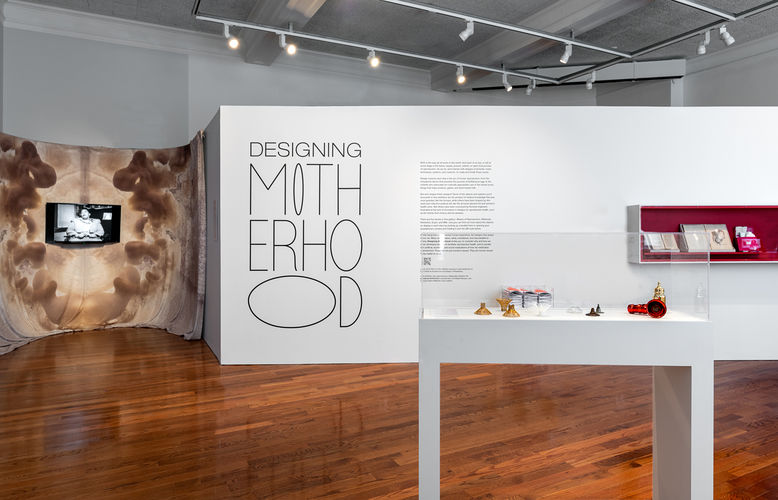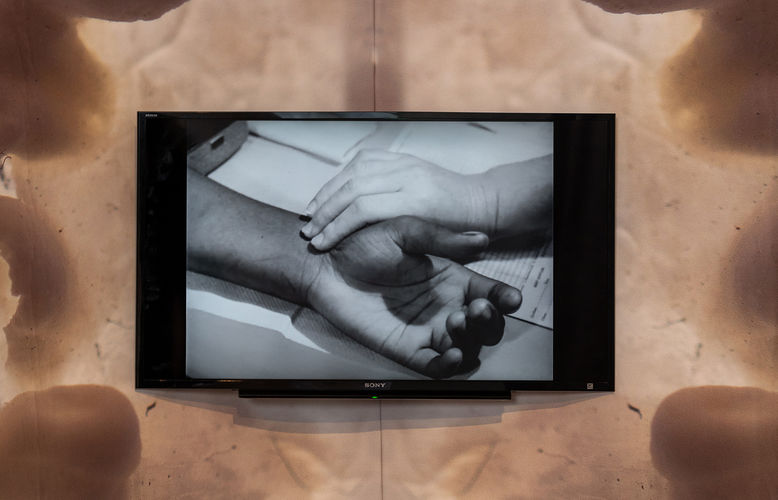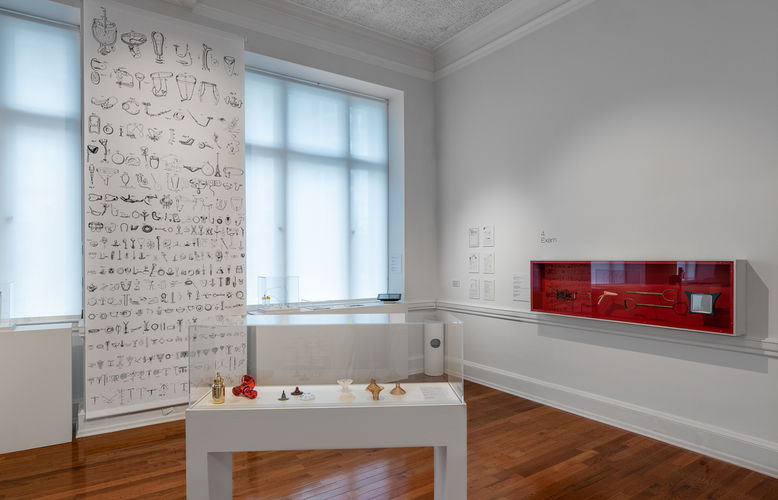When Amber Winick graduated from the Bard Graduate Center’s MA program in 2013, she was pregnant with her first child and an idea. After nearly a decade of research, collaboration, and perseverance, that idea would develop into a groundbreaking book and accompanying exhibition series titled Designing Motherhood: Things that Make and Break Our Births, which is currently on view at Philadelphia’s Mütter Museum.
The idea began to form at BGC where Winick focused various strands of her research on the material culture of childhood. Working with faculty members Paul Stirton and Amy Ogata, she explored Hungarian and Central European design for children and benefited from the BGC’s partnerships with The Century of the Child exhibition at the Museum of Modern Art (MoMA). For Michele Majer’s class on twentieth-century fashion, she wrote a paper on trends in maternity wear. Looking back, she sees this as the starting point for Designing Motherhood. Her pregnancy added fuel to the fire becoming a form of what she called “me-search.” She elaborated, “By the time I became a mother, I had already drunk the BGC Kool-Aid and was looking at design as shaping every aspect of my experience.” In 2015, she attended the baby shower of a mutual friend where she met Michelle Millar Fisher, then a curatorial assistant in the design and architecture department at MoMA. They began talking about design related to human reproduction and decided to work together, formulating an idea for a book that they then began to pitch to publishers. However, despite their excellent publishing contacts, their proposals were rejected time and time again, a pattern they saw as a misogynistic blind spot within the design and architecture world.
Determined, they applied for a grant from the Pew Center for Arts and Heritage, and fortunately received this crucial funding. They also partnered with the Maternity Care Coalition (MCC), an organization that supports culturally appropriate care for families across Pennsylvania. Winick said, “That partnership really helped us think about the everyday impact of design—not only for objects but also systems. We saw on a very micro and macular level how policy design shapes our experiences as reproductive people in the world, whether or not we choose to have children.” In 2017, the evolution of the #MeToo movement helped turn the tide in their favor—after receiving dozens of “nos,” they received offers from three publishers in the same week. The book, ultimately published by MIT Press in September 2021, explores over one hundred designs grouped into four categories: reproduction, pregnancy, birth, and postpartum.
The exhibition, which was inspired by the book, opened at the Mütter Museum as well as the Center for Architecture and Design, both in Philadelphia. Though the exhibition at the Center for Architecture and Design recently closed, Designing Motherhood will be on display at the Mütter through May 2022. Many of the objects displayed are affordable and quotidian: some were found on EBay, such as the original “Tassette” menstrual cup (c. 1959), while others came from Winick’s collection or were donated. As such, she thinks of the process of acquiring these pieces as a form of community-building. Combined with objects from the Mütter’s collection, the show’s fresh perspective counteracts the museum’s history as a white, male-oriented institution. Founded in 1863 by a member of the College of Physicians of Philadelphia, Dr. Thomas Dent Mütter, the museum’s “disturbingly informative” collection of historical medical specimens includes a number of fetuses preserved in formaldehyde. Two floors of crammed Victorian display cabinets precede the Designing Motherhood gallery—a contrastingly bright and contemporary space where nipple shields, IUDs, and pessaries are presented as art objects, and fabric printed with cloudlike breastmilk stains (Aimee Gilmore’s Milkscape) provides a backdrop. Designed by Helen Cahng, the objects are arranged around five themes: means of reproduction, midwives, parturition, exam, and milk. Instead of only focusing on the best of design, both the book and the exhibition also consider how design misses the mark and how it could be improved. Along with outdated objects such as a clunky breast pump from the 1950s, the show highlights contemporary designs such as the Yona speculum and the VieVision mirror from nyssacare, a company that makes innovative products for women’s health. Furthermore, Designing Motherhood addresses themes such as medical racism and the role of midwifery through the centuries.
The Designing Motherhood project is ever-expanding. Alongside Winick and Fisher, curators Zoë Greggs and Gabriella Nelson have collaborated with MCC to create a story banking initiative and the group, alongside Juliana Barton, spearheaded an open-source curriculum, which was piloted at Penn Design. The exhibition was conceived to be flexible and tailored to local communities so that it can continue to travel after it finishes its run within Philadelphia. Over the next two years, the Designing Motherhood team look forward to the exhibition traveling nationally and internationally. For more information and tickets, visit https://muttermuseum.org/exhibitions/designing-motherhood.
Mackensie Griffin is a second-year BGC MA student.




